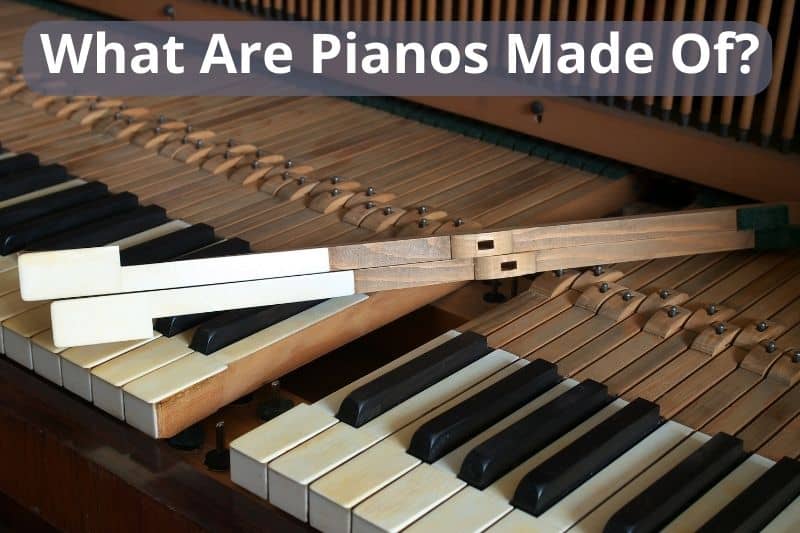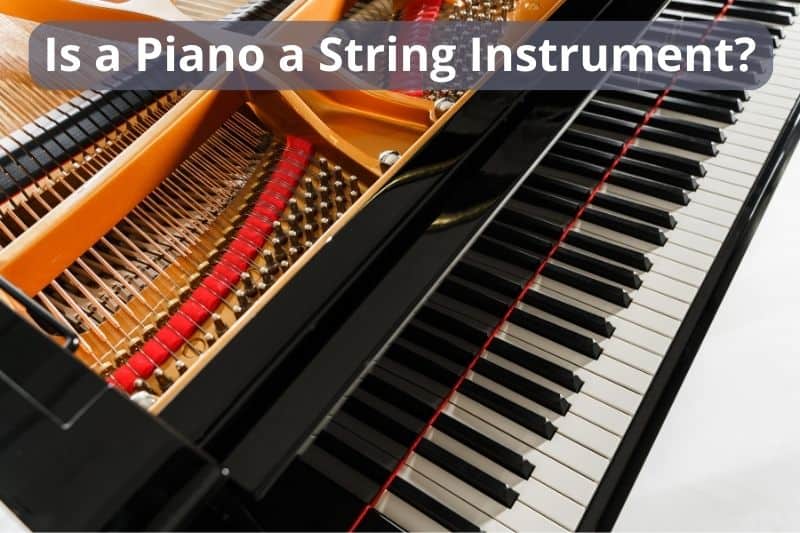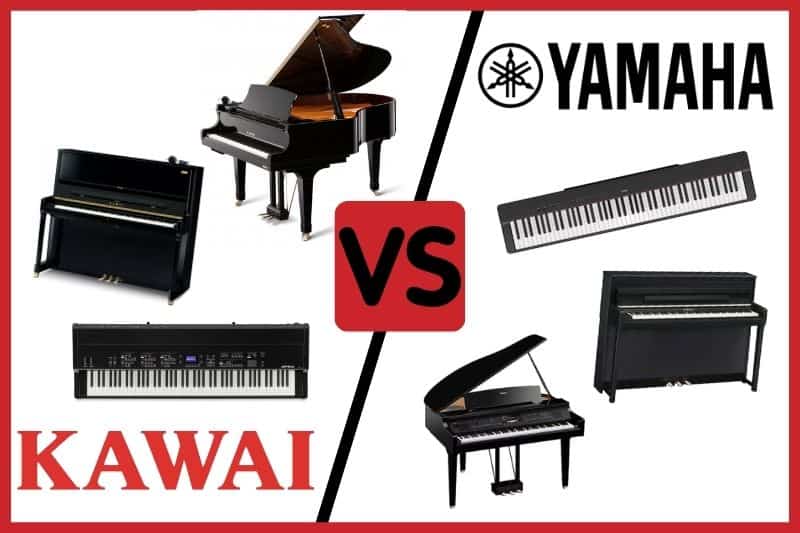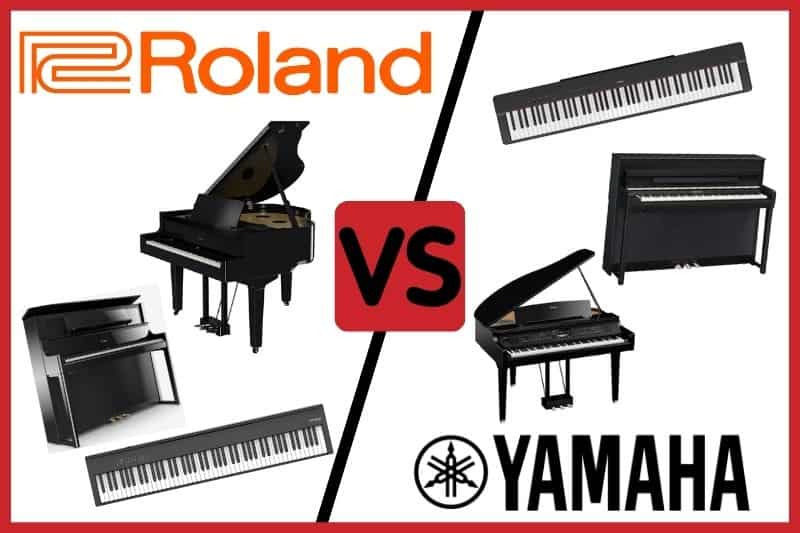Throughout its history, the piano has evolved from its early ancestors, like the harpsichord and clavichord, with notable improvements credited to Bartolomeo Cristofori in the 18th century.
Whether it is a grand or upright model, the materials are precisely engineered to create the powerful and nuanced sounds associated with the piano.

As you take a deeper look into the construction of a piano, the attention to detail becomes apparent. From the cast iron frame that supports the tension of the strings to the careful selection of wooden veneers that form the body, each component plays a pivotal role in the instrument’s functionality and sound production.
Historical Development
The piano’s journey from its humble beginnings to the modern centerpiece of concert halls reflects centuries of musical innovation and industrial craftsmanship.
Origins and Early Models
The piano’s ancestry begins with instruments like the monochord, and evolves from the hammered dulcimer, clavichord, and harpsichord. Italian inventor Bartolomeo Cristofori is credited with the creation of the first true piano around 1700, developing a mechanism to strike the strings with hammers, which allowed musicians to vary the intensity of sound, or dynamics. This early version, known as the fortepiano, was similar in shape to the harpsichord, but with this crucial difference in touch and sound production.
Evolution to Modern Piano
Throughout the 18th and 19th centuries, the piano underwent significant changes. The fortepiano evolved into more robust instruments like the square piano, popular in domestic settings, and later into the upright piano, which saved space while allowing a full resonant sound. The grand piano emerged, expanding in size and range to become the large, sonorous instrument you’re familiar with today. The action of the piano—its mechanical part—continued to improve, enabling more expressive playing that composers like Frédéric Chopin would fully exploit. During the Industrial Revolution, advances in materials and mechanization led to the modern piano with its iron frame and sophisticated action.
Notable Piano Makers
Over decades, several manufacturers have stood out for their contributions to the piano’s development. In the early 18th century, Gottfried Silbermann was among the first to refine the fortepiano; later, acoustic piano makers expanded on his designs. In the 19th century, companies like Steinway & Sons in the United States and Bechstein in Germany became renowned for their grand and upright pianos. The 20th century saw the introduction of the player piano, which could play automatically using a roll of paper with holes punched in it, a marvel of the time. Today, names like Yamaha and Kawai illustrate the global expansion of piano manufacturing and the instrument’s continued popularity.
Main Components and Materials
Pianos are a complex assembly of materials ranging from various kinds of wood to metals, each playing a crucial role in the instrument’s sound and durability.
Piano Frame and Rim
The piano’s frame, often made of cast iron, is crucial for bearing the string tension, which can exceed 20 tons in a grand piano. The rim, commonly crafted from layers of hardwood, like beech or maple, is bent and glued to create a curved shape that contributes significantly to the piano’s strength and acoustic properties.
Soundboard and Bridges
Your piano’s soundboard is usually made of spruce, chosen for its excellent acoustic properties. It’s the wooden diaphragm that amplifies the vibrations from the strings. The soundboard has bridges attached to it, which are wooden structures that support the strings and transfer vibrations with precision.
Strings and Tension
Strings are fundamental to a piano’s sound. Made from high-tensile steel wire for the treble and mid-range notes and copper-wound steel wire for the bass, they are under immense tension. This tension is critical for maintaining pitch and enabling a dynamic range of sounds.
The Action Mechanism
The action mechanism of a piano is a complex system involving hammers and dampers. The hammers, often made with felt, strike the strings to produce sound, while dampers, which are fitted with felt pads, stop the strings from vibrating when you release a key.
Keys and Keybed
The keys of a piano are the interface between you and the music. Traditional pianos use ebony for the black keys and ivory for the white, although modern pianos typically use plastics or other synthetic materials. The keybed provides support for this array of black and white keys, allowing for consistent and responsive playing.
Additional Elements of a Piano
While the keys and hammers are often the stars of the piano, it’s the various additional elements that complete its complexity and functionality. These components are essential in defining the piano’s performance and aesthetics.
Pedals and Their Functions
Your piano typically has three pedals, each with a specific role. The damper pedal, on the right, lifts all the dampers off the strings, allowing them to vibrate freely. This creates a sustained sound even after you release the keys. The soft pedal (or una corda), usually on the left, shifts the action slightly so that the hammers strike fewer strings, softening the sound. In the middle, you might find the sostenuto pedal, which sustains selected notes while others play normally.
Exterior Case and Finish
The case of your piano isn’t just furniture; it’s a carefully crafted wooden shell that plays a crucial role in the acoustics of this musical instrument. The finish, whether glossy, matte, or satin, contributes to the piano’s overall appearance, protecting the wood and showcasing the piano as a centerpiece in your home.
Piano Wire and Pinblock
Your piano’s strings, or piano wire, are made of high-tensile steel, allowing them to hold the tension needed for proper tuning. The pinblock is an often unseen yet critical hardwood component, providing anchorage for the tuning pins and ensuring that your piano holds its tuning stability over time.
Piano Hardware
The hardware on a piano includes all the metal components like hinges, locks, and casters. These elements are not only functional but also contribute to the instrument’s aesthetic. The cast iron plate, or harp, is a large piece of metal hardware inside your piano that supports the tension of the strings. This plate is essential for the structural integrity and tuning stability of your piano.
Material Specifics
Pianos are a complex assembly of materials, each chosen for its unique properties to ensure the instrument’s durability and sound quality.
Woods Used in Piano Making
Hardwoods like maple and mahogany are renowned for their strength and are frequently utilized in areas requiring support, such as the frame. Softwoods, particularly Sitka spruce, are preferred for the soundboard due to their excellent resonance and lower moisture content, which enhances tonal quality.
- Maple: Used for its density and strength, especially in high-stress parts like the pin block.
- Mahogany: Valued for its fine grain and strength, often found in the outer rim.
- Cypress: Sometimes utilized in lower-stress components for its aesthetic appeal.
Maple and mahogany are key for their reliability, supporting the tension of the steel strings, while cypress offers an attractive finish with good acoustics.
Metals in Piano Construction
Cast iron is used to make the piano’s harp, or plate, because it can withstand the immense tension of the strings. Steel wire constitutes the strings themselves, chosen for its tensile strength and durability. Copper wire is often wound around the lower strings to deepen their tone.
- Cast Iron: Forms the plate, providing strength to support string tension.
- Steel Wire: Creates precise and strong strings for consistent musical notes.
- Copper: Adds weight to bass strings, enriching the piano’s sound.
The metals in a piano play a critical role in its overall structural integrity and sound production.
Modern Materials and Components
Advancements in materials science have introduced plastics and teflon to the construction of pianos, often used in action parts for their durability and low friction.
- Plastic: Reduces wear in action components and can be aesthetically pleasing.
- Teflon: Utilized to minimize friction in the piano’s mechanical action.
- Laminating: Layers of wood and other materials are used to enhance strength and stability.
While traditional materials like wood and metal continue to be mainstays in piano construction, modern components like teflon are increasingly common, providing improved performance and maintenance.




